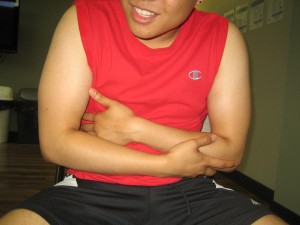Sports hernia or Gilmore’s groin is considered as a prevalent injury that usually affects collegiate and professional athletes. Always bear in mind that sports hernia will not generate a hole in the wall of the abdomen. Sports hernia is characterized by a hole to the oblique abdominal muscles that do not generate an evident and palpable bump beneath the skin. Due to the characteristic of this hernia, it can be difficult to diagnose.
The early indications of sports hernia include dull, aching pain in the inferior abdomen. The other accompanying symptoms that can manifest include pain in the groin area and testicular pain among males. The only way to deal with sports hernia is to have it removed surgically. Nevertheless, various treatment options can be carried out that can help reduce the symptoms of the hernia as well as keep the individual active until surgery can be carried out. Enrolling in a first aid class is a must if you want to properly manage this condition.

Application of ice
Ice therapy can be utilized if the symptoms of sports hernia are manifesting. This form of treatment can minimize the swelling triggered by the injury and also the pain. The ice pack must be applied on the affected area for 10-15 minutes every 4 hours throughout the day.
Anti-inflammatory medications
Anti-inflammatory drugs particularly ibuprofen can be a temporary treatment option for the condition. Anti-inflammatory medications could not completely deal with a sports hernia but can decrease the swelling linked with condition which also diminishes the level of pain.
Compression shorts
Compression shorts or warm pants can be an option for an individual who wants to delay surgical intervention. The use of compression shorts will not diminish the symptoms of the condition but can stop the tear from deteriorating until the surgical intervention is carried out.
Rest
Rest is one of the most recommended treatments for sports hernia. If the affected muscles are allowed to rest, it will greatly improve the healing process. The length of inactivity is based on the severity of the injury. The rest period should be short or as long as several months.
Physical therapy
In most cases, those with sports hernia can respond well to physical therapy if the condition was properly diagnosed. The physical therapy treatment can help promote the healing of the sports hernia which involves stretching of the inferior abdominal muscles, lower muscles of the extremity and the tendons. Additionally, strengthening of the core muscles can help correct the imbalance in the muscle strength between the legs and the core muscles. This is vital since sports hernias are often due to the imbalance between these muscles.
Surgical intervention
Surgical intervention is needed to repair sports hernia if other treatment options do not work. In the recent years, various advancements were modified in the process to repair sports hernia. These surgeries can be performed laparascopically which reduces the period of inactivity after the surgery.
